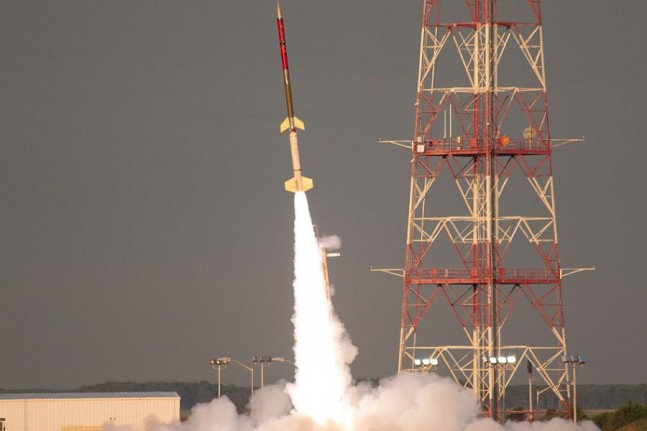Testing Technology in Zero Gravity
Experiment on a Sounding Rocket Gives Students a Shot at NASA Research
Not many students get a chance to do research for NASA as undergrads, but it’s the type of opportunity that’s possible at Florida Tech.
Aerospace Engineering professor Hamid Hefazi was recently awarded a grant that will allow students to test a wire repair system developed by NASA and Vencore Inc. The experiment will be conducted on sounding rocket launched from Wallope Island, Virginia some time in October 2016.
The patch material in question is a flexible and temperature-resistant polyimide film currently used for aircraft applications. The new technology is heated with a custom tool that cures the film so that its hermetically sealed. The end result is more flexible than repairs made using methods such as tape or shrink wrap.
The goal of the two-year NASA Undergraduate Student Instrument Project is to see if the patch could be used in a microgravity environment, such as a space vehicle or even the International Space Station—thus the need for the rocket to carry the experiment to sub-orbital space.
Five student engineers will design and fabricate the experiment here at Florida Tech and two chemistry students will conduct various tests on the samples after they return from space flight. Supervising the project is Hefazi along with associate chemistry professor, Kurt Winkelmann and Markus Wilde, assistant professor of Mechanical Aerospace Engineering. Additional advice and help for the students will come from researchers at Vencore Inc. and scientists at Kennedy Space Center.
When the experiment is ready to be tested, the consolidated project will be placed on one of 16 types of available NASA Sounding Rockets (whichever one is most appropriate for the size, weight and weightlessness requirements are for the experiment) and launched by NASA at Wallope Island. For the three short minutes the rocket will be in microgravity, an automated system created by the students will start and stop the repair process of the wires using the new material for various lengths of time.
When the samples arrive back at Florida Tech, chemistry students will determine if the wire repair method is as effective in space as it is on Earth.
%CODE1DISCOVERYMAGVOL13%






